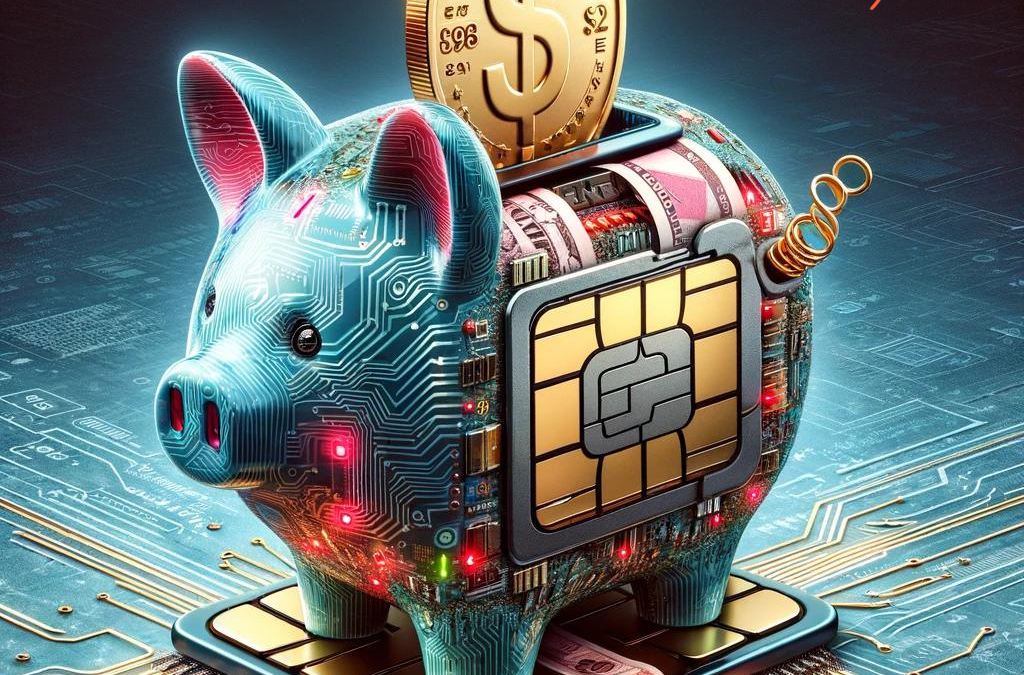
New Radio Technologies for IoT in 2024
November 27, 2023
2023 Year In Numbers
December 20, 2023Introduction
With more devices becoming “smart” having it connected to the internet is no longer a nice to have feature but a must have. This is why many IoT Device and Solution Makers are opting for a more reliable cellular connectivity over Wi-Fi. Cellular connectivity is inherently different cost structure from Wi-Fi and there are many more options.
This article breaks down the cost between a traditional SIM card and a eUICC / eSIM card that can be remotely provisioned.
Section 1: Basics of SIM and eSIM Technology in IoT
The traditional SIM card was introduced to the market in 1991 and has evolved alongside the Network Technology from 1G to 5G. In addition to the Form Factor of the SIM card went from Plug-in to 2FF (2nd Form Factor) to 3FF, 4FF and MFF2 (embedded).
The modern IoT SIM card is simple. Keep it as cheap as possible and enable the authentication of my device to the Cellular Network. Once a SIM card is manufactured it stays with the same Cellular Network until it is decommissioned.
While eSIM technology performs the same authentication function it is more complicated with the ability to remotely change the eSIM (electronic SIM) on the eUICC (hardware component). It’s not just the SIM card anymore but there are also server components involved. If you’d like to dive further into how eSIM technologies work, you can dive in with this article: “How to avoid carrier lock in for your iot devices using esim technology: a beginners guide to freedom with esim”
There are many inherent costs of enabling this full ecosystem from an SM-DP+ setup to an eSIM Profile creation fee which are significant. However, at Simplex Wireless we hide those fees and costs from our enterprise customers and in this article, we will focus on what it will cost you.
Section 2: Deployment Costs
Deploying an IoT project with a traditional SIM card it is typical that there is a SIM card cost only. An IoT SIM card typically costs between $1 to $3 depending on volume of SIM cards you are looking to acquire.
An eSIM enabled SIM card (called eUICC) is a larger capacity SIM card (1.2 -2MB) and has a cryptographic coprocessor to handle eSIM functionalities. With this, an eUICC typically runs between $2 to $4 again depending on volumes.
In addition, of the eUICC service providers may charge eSIM generation fees or eSIM activation / download fees.
Section 3: Operational Costs
The cost to operate a SIM card vs an eSIM should be the same in terms of connectivity related costs. If a company has a monthly fee or a platform fee it will likely be the same for both technologies. There can also be Activation/Deactivation/Pause fees that Services Providersmay add on top if needed.
Section 4: SIM swap fee
The number one reason why the eSIM is gaining popularity is the ability to change service providers. With a traditional SIM card there is no swap fees per se other than acquiring a new SIM card. However, a truck roll to go and swap a SIM card physically can run anywhere between $50 to $500 per SIM card.
With an eSIM a download fee would be typically between $1 to $2, depending on the contract.
With a traditional SIM card, swapping out 10,000 SIM cards would be between $500,000 to $5,000,000 whilst with eSIM it would be between $10,000 to $20,000.
It is clear that the swap our costs will easily outweigh any additional costs the new technology brings.
Section 5: Industry Insights and Future Trends
With the release of SGP.32 eSIM for IoT specification we can see the industry rallying behind this technology and removing some of the ambiguity that Consumer vs M2M eSIM specification had instilled in the market.
We at Simplex Wireless believe that eSIM for IoT (SGP.32) support will be in the majority of devices by 2026 and will become table stakes for cellular enabled IoT devices.
Conclusion:
While there are some more upfront costs that can come with adoption eSIM on the IoT device in the long run it will be much cheaper to use as it enables provider selection in the long term. Not only is it commercially feasible to switch providers but also it allows access to the latest technologies and price models available.
We at Simplex Wireless are natively eSIM enabled for our services from ground up. This means that our customers can choose all the services with a traditional IoT SIM card or with an IoT eSIM. This allows device and solution makers to adopt eSIM technology in their next project cost effectivity!
Reach out to us if you’d like to chat how we can help you with your next project!






